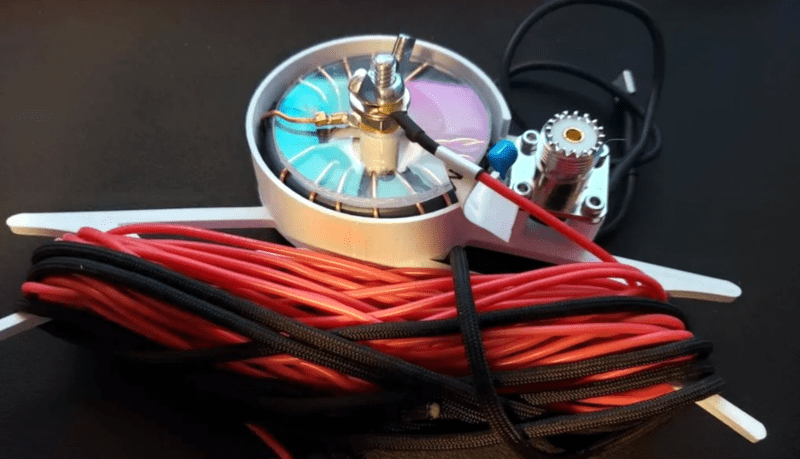You don’t normally think of a 3D printer as a necessity for an antenna project. However, if you are interested in making a handy portable antenna, you might want to melt some plastic. [N2MXX] has an end fed antenna winder design that also contains the necessary matching toroid. This would be just the thing to throw in your backpack for portable operation.
The end-fed configuration is handy for portability too, because you can easily secure one end and feed the other end. Compare that to a dipole where you have to feed a high point and secure both ends.
Of course, you also need wire and some other components — we don’t know how to 3D print a usable ferrite toroid. Honestly, there is some controversy about how these antennas actually work, but people swear that they work well.
There are quite a few ways to operate a portable station, depending on your definition of convenient is. Verticals are popular, although laying out ground wires can be painful. A dipole isn’t that hard to erect, especially if you are staying in one place for a while. However, we really like how small this design is and it should be easy to clip one end and just play out the wire to operate. Our only concern is how plastics will fare in the elements over the long term. Then again, if it wears out, you can just print a new one.
Our own [Dan Maloney] has made these sort of antennas and had good luck. If you want to go really tiny, try surface mount.
















“Honestly, there is some controversy about how these antennas actually work, but people swear that they work well.”
We know HOW these antennas work, the debate is about how WELL they work.
Ah, so I guess it always come down to something like “Did Biggsy really pull in Europe on that thing, or hook a transwarp conduit over the Atlantic???” … okay Tropospheric ducting, but I’m just trying to make youse guys sound cooler ;-)
A transwarp conduit certainly would be cooler than tropo ducting, but how does one keep the Borg from using it?
If the path resistance to non futile, are they destroyed by reflected power?
They work fine, but there will always be a better antenna. It’s not like I’m camping and setting up a 20m EFHW and think to myself “Gosh, will this perform as well as a 1/4 wave vertical with radials?” Of course it won’t, but I don’t have that option.
I’ve personally pulled in a 1000 miles per watt QSO on a 5 watt home built QRP rig with an EFHW poorly positioned in a tree at the beach. Would a dipole have been better? Maybe, but I didn’t have a way to setting it up.
One thing to note, there’s some confusion about EFHW (1:49/64) vs random wire (1:9). Some people have worse luck with the latter and confuse it with EFHW.
Next up we can debate benchmarking the raspberry pi vs an AMD Ryzen. We know the Raspberry Pi works, but how well does it work?
Better antenna…that term doesn’t mean too much in the ham world. For any given frequency, between any two endpoint locations, at any given propagation, at any given time of day there is always a better antenna. The main pursuit is to find an antenna that is practical for your deployment and serves the widest variety of mode and locations that you like. You might have room for a 200 foot tower or an incredibly long rhombic antenna but I might be hiking a glacier. The debate about best antenna is pointless without answering “best for what?”
I like to see lots of different antenna designs. It keeps the mental toolbox full of ideas. I probably will never build this exact antenna but I might very well steal some design details of it. You could construct an ideal antenna for a particular condition but by the time you build it the conditions change. Ham radio reception is an equation with about 100 constantly changing variables, most of which are not under your control or even fully understood. It is true that some modes of propagation like sporadic E are known to exist. No one is absolutely sure about the cause or if there are multiple causes for it to exist. Obviously there is ionization in the E layer, how it got there is the question. One suspect is high level lightning activity. For ducting it seems to have a lot to do with temperature inversions but predicting that is difficult just like most atmospheric modeling. For hams, being a good operator is about playing the odds based on experience and data available to us.
I really like these king of articles about HAM radio and antennas, because they give me ideas, which I can try out in my garden, which is not ideal for HAM antennas. I don’t have tall trees or room for masts to erect, so I’m always looking for new ideas. The best I could do so far is a windom for 20m, about 5m high and an inverted V for 40m. They work, but I need more! :)